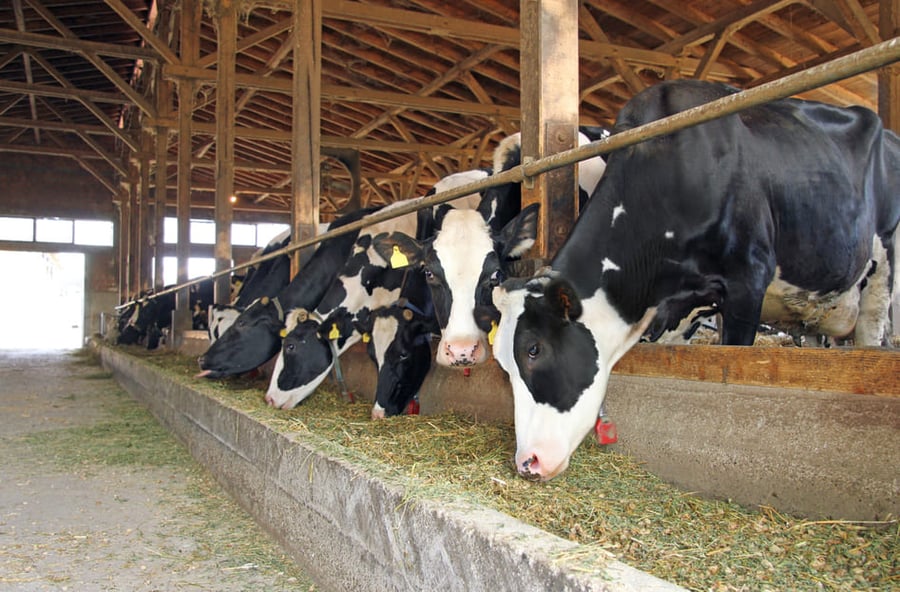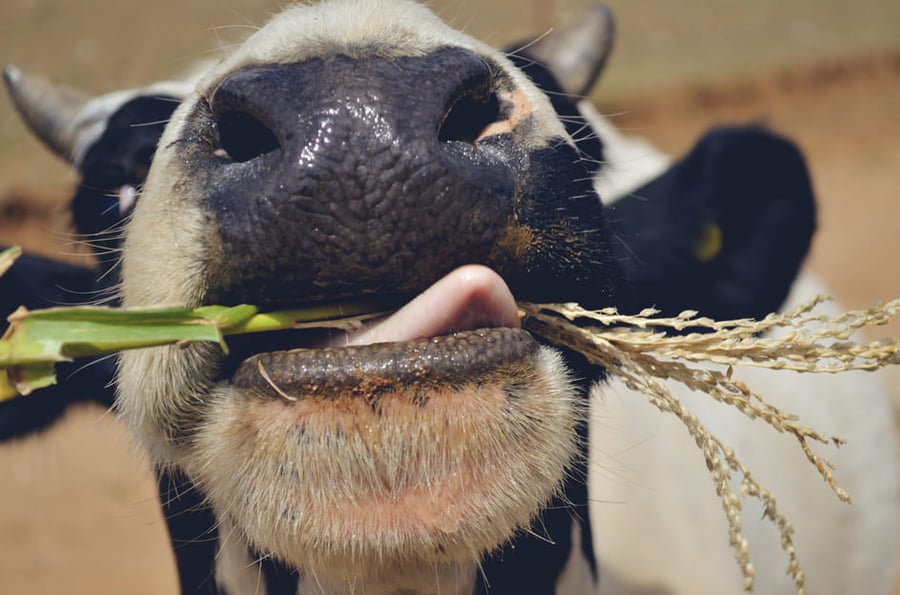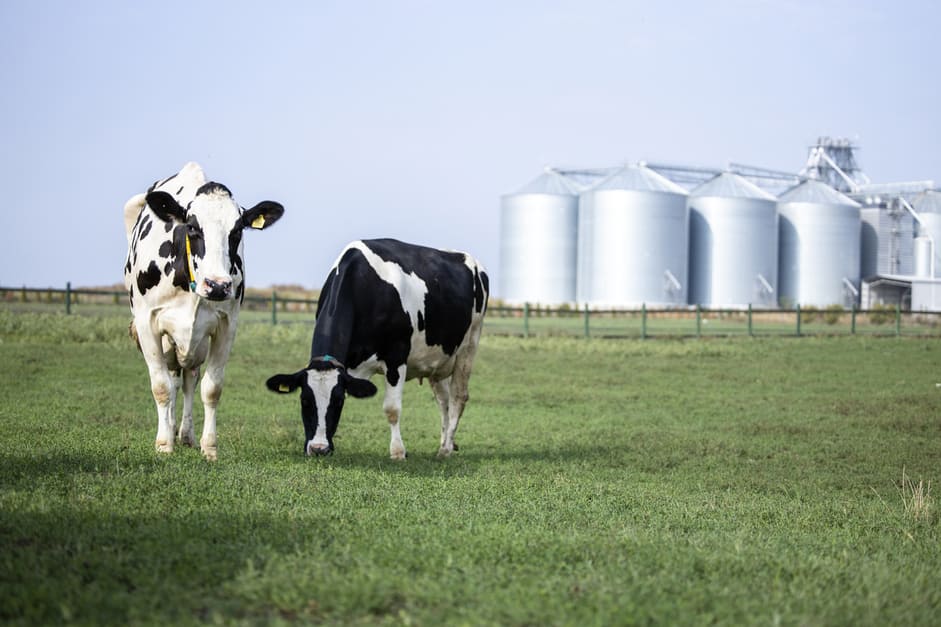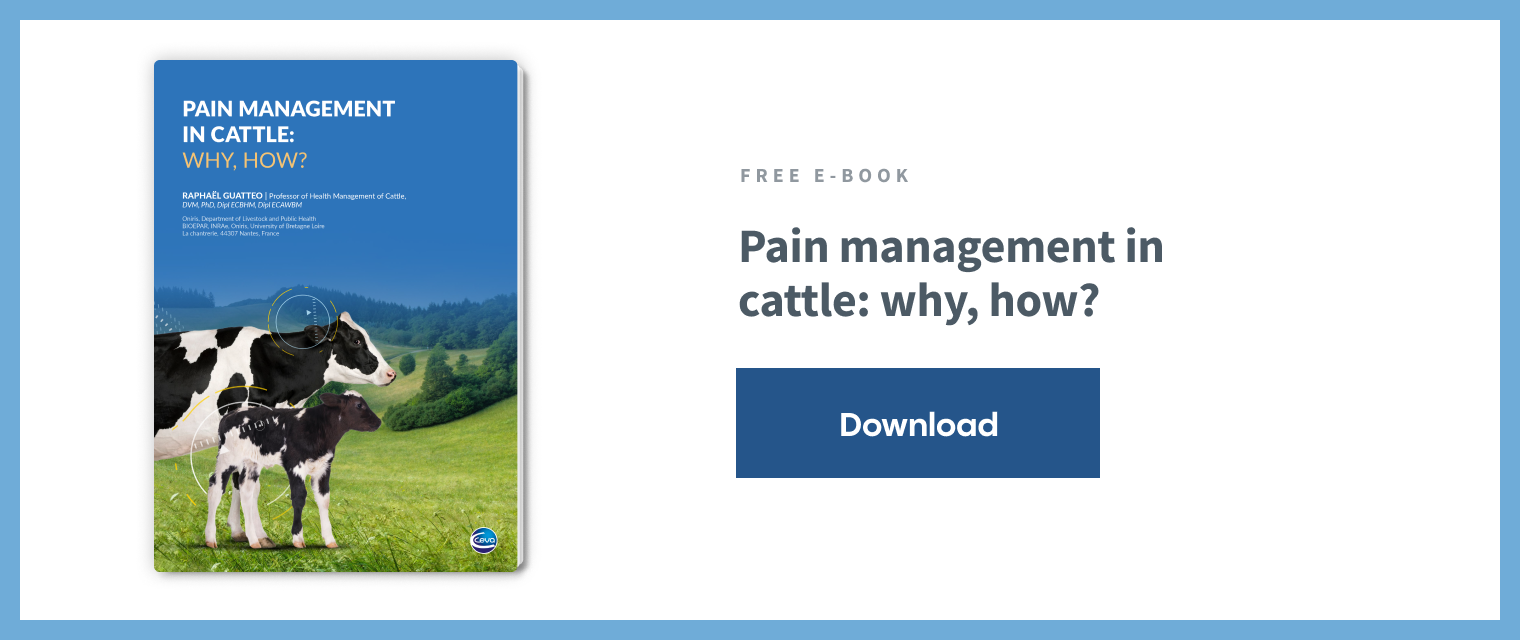Meeting dairy cow nutrition requirements, is as challenging as it is exciting. Ensuring adequate nutrient input while respecting the balance and health of the reticulum-rumen ecosystem can be complicated, even more when we should keep in mind the sphere of economics, where the availability and price of feedstocks can be determinant to formulate high-quality compound feeds.

Feed intake is an essential pillar of nutrition and it may be affected by intrinsic factors (physiologic state, body condition, production levels and days in milk) and extrinsic factors such as bunk management and characteristics of the feed offered to the animals (composition, palatability and digestibility).
Essential feeding requires water, carbohydrates, aminoacids, fatty acids, minerals and vitamins1. However, in dairy cattle, requirements vary greatly according to the stage of lactation. This means early lactation cows require much more nutrients than late lactation. The difficulty relies on the fact that satisfying nutrient requirements is often limited by feed intake, particularly in the first weeks post calving. Thus, we must focus on maximizing voluntary intake.
Knowing the amount of feed that the animal is capable of ingesting is thus essential to then provide adequate diet formulation to meet its demands. In Table 1 we can have a glimpse of the high requirements regarding dairy cow nutrition:
|
|
Dry (far off) |
Cow - Fresh |
Cow - early |
Cow - mid |
Cow - Late |
|
Body weight (kg) |
675 |
675 |
675 |
675 |
675 |
|
DMI (kg/day) |
14 |
15 |
30 |
24 |
20 |
|
Milk production a (kg/day) |
|
35 |
55 |
35 |
25 |
|
Crude protein (%) b |
9.9 |
19.5 |
16.7 |
15.2 |
14.1 |
|
RDP (%) |
7.7 |
10.5 |
9.8 |
9.7 |
9.5 |
|
RUP (%) |
2.2 |
9.0 |
6.9 |
5.5 |
4.6 |
|
MP (%) |
6.0 |
13.8 |
11.6 |
10.2 |
9.2 |
|
NEL (Mcal/kg) |
1.32 |
1.8 c |
1.61 |
1.47 |
1.36 |
|
NDF (%) |
40 |
30 |
28 |
30 |
32 |
|
NSC (%) |
30 |
21 |
19 |
21 |
24 |
|
Calcium (%) |
0.44 |
0.79 |
0.60 |
0.61 |
0.62 |
|
Phosphorus (%) |
0.22 |
0.42 |
0.38 |
0.35 |
0.32 |
|
Magnesium (%) |
0.11 |
0.29 |
0.21 |
0.19 |
0.18 |
Adapted from “Nutritional Requirements of Dairy Cattle”, Van Saun, R.J., 2022, adapted from National Research Council. Nutrient Requirements of Dairy Cattle: Seventh Revised Edition. Washington, DC: The National Academies Press, 2001. https://doi.org/10.17226/9825.
DMI, dry-matter intake; RDP, rumen degradable protein; RUP, rumen undegraded protein; MP, metabolizable protein; NEL, net energy lactation; ME, metabolizable energy; NDF, neutral detergent fiber; ADF, acid detergent fiber; NSC, non-structural carbohydrates.
aMilk components: 3.5% fat, 3.0% true protein, and 4.8% lactose.
bAll concentrations are on a dry-matter basis.
cThe maximum energy concentration that can be formulated without resulting in insufficient dietary fiber or excess fat concentrations is 1.8 Mcal/kg dry matter. This energy concentration will typically not meet the energy requirements at this lactation stage, and these cows will lose weight.

Nutrients1,2
Water is the most important nutrient when considering milk production, as it represents 87% of its composition. This means high producing dairy cows consume massive amounts of water and farmers should thus ensure free access to enough fresh and clean water.
Carbohydrates are the major components of the diet and a greater source of energy. They are found in forages, roughages and grains and comprise structural carbohydrates (hemicellulose and cellulose) that make up the fibrous component of feeds, and non-structural carbohydrates (NSC - starches and sugars). The fibre component of the diet supports and ensures rumen health. The so called “effective fibre” is essential to allow rumination to take place. The balance between dietary structural and non-structural carbohydrates is of paramount importance, specially when feeding early lactation cows that must be provided rapidly fermentable carbohydrates to satisfy their energy needs, while effective fibre must also be adequately offered to ensure rumination, saliva production and ruminal pH buffering. Keeping an adequate balance will allow the animals to thrive through the lactation peak without showing signs of ketosis and/or ruminal acidosis.
Fat is the most energy dense nutrient, and although it is essential in dairy cows to increase the energy of the diet (particularly during the negative energy balance period) it must be provided cautiously as it may affect rumen microorganisms. Most fats from vegetable origin are unsaturated, hydrogenated in the rumen and may affect rumen microorganisms when fed in considerable amounts. Rumen inert fats such as hydrogenated fat or calcium soaps should thus be used, to increase energy density without compromising reticulum-ruminal health.
Primary supplies of protein can be soybean meal, rapeseed meal and corn gluten meal. Crude protein may be rumen degradable (RDP) or undegradable (RUP or bypass protein) if it is used by microbes in the rumen, or if it bypasses the rumen. RDP is degraded by ruminal microorganisms to free amino acids, dipeptides and ammonia. The latter may be used by bacteria (mainly cellulolytic) to synthesise microbial protein (which will progress into the small intestine to be digested by the animal). Both RDP and bypass protein are needed, and so different protein sources should be used to assure that they are provided.
When formulating diets for dairy cows, one must also not forget the macromineral (Na, Ca, P, Cl, Mg, K and S) and trace element (Cu, I, Fe, Mn, Mo, Zn and Se) requirements, and also vitamin supplementation (vitamins A, D and E). Ruminants produce enough vitamin K and all the hydrosoluble vitamins. It is worth pinpointing, though, that studies are being made to assess if high producing dairy cows would benefit from the supplementation with these vitamins, namely B-vitamins and folate.

Key take aways
When considering dairy cow nutrition requirements, one must keep in mind that:
- With water representing 87% of milk composition, ensuring free access to enough fresh and clean water is key.
- Feed intake can be a major limitation, specially in early lactation cows. Maximizing voluntary feed intake should be aimed.
- Forages are the main ingredient and the major source of structural carbohydrates of dairy cattle diets.
- Protein density and protein sources should be adapted according to milk production levels.
- Fat is a valuable ally, particularly in high performance dairy cows. Rumen-inert fats should be used to avoid deleterious effects on ruminal microbiome.
- Macro and micromineral and vitamin supplementation should be provided. Ruminants produce hydrosoluble vitamins, although studies are suggesting dairy cattle would benefit from supplementation.
References
1. Erickson PS, Kalscheur KF. Chapter 9 - Nutrition and feeding of dairy cattle. In: Bazer FW, Lamb GC, Wu G, editors. Animal Agriculture: Academic Press; 2020. p. 157-80.
2. National Research Council. Nutrient Requirements of Dairy Cattle. Washington, DC: The National Academies Press; 2001. 405 p.
3. Girard CL, Duplessis M. The importance of B vitamins in enhanced precision nutrition of dairy cows: the case of folates and vitamin B-12. Can J Anim Sci. 2022;102(2):201-10.



Leave your comments here